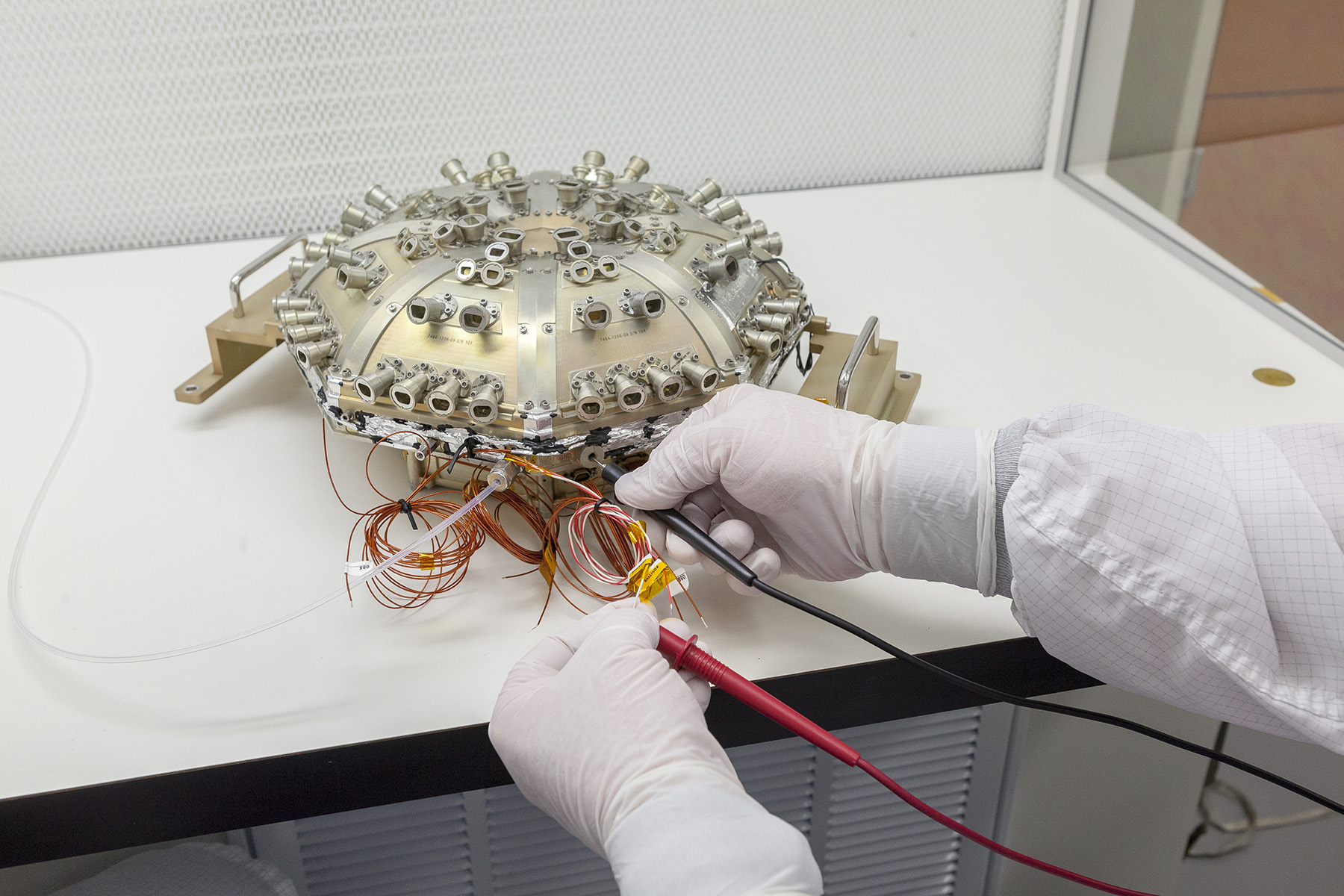Tuning Up: Solar Probe Plus Gets its First Science Instrument
Posted on 2017-05-17 07:32:31With a few electrical connections and several turns of a wrench, Solar Probe Plus had its first onboard scientific instrument. The EPI-Lo particle detector – half of the Integrated Science Investigation of the Sun instrument suite – was installed on the spacecraft on April 17 at the Johns Hopkins Applied Physics Laboratory (APL) in Laurel, Maryland.
“With EPI-Lo on board – our first scientific instrument – we can begin to call Solar Probe Plus an ‘observatory,’” said Andrew Driesman, Solar Probe Plus project manager from APL. “We are looking forward to the integration of the other instruments on the spacecraft, subsequent testing, on-orbit science operations and ultimately new discoveries.”
Designed and built by the APL – which also designed and is building the Solar Probe Plus spacecraft – EPI-Lo will measure low-energy particles streaming from the sun. Combining EPI-Lo data with the high-energy particle measurements of its EPI-Hi component, the entire suite will explore the mechanisms that produce, accelerate and transport energetic particles in the inner heliosphere – which stretches from the Sun’s corona to the orbit of Mercury.
“Measuring the energetic particles near the sun, and flying an entire suite of instruments on such a Solar Probe is an exciting event in science almost 60 years in the making,” said Ralph McNutt, the EPI-Lo lead from APL. “This type of instrument has also been decades in the making at APL, and is the next extension for such time-of-flight plus energy instruments, which orbited Mercury on MESSENGER, flew by Pluto on New Horizons, and are currently circling the Earth on the Van Allen Probes and Jupiter on the Juno mission. All of these instruments came from the leadership of Don Mitchell in instrument concepts and design and through the teamwork of a gifted set of scientists, engineers, programmers and managers at APL.”
David McComas of Princeton University is the Integrated Science Investigation of the Sun (IS¤IS) principal investigator, and the Southwest Research Institute, San Antonio, manages the IS¤IS suite. NASA’s Jet Propulsion Laboratory is providing the EPI-Hi instrument, scheduled for integration later this week.
Solar Probe Plus will carry three other scientific instruments and suites: a solar wind plasma suite, the Solar Wind Electrons Alphas and Protons (SWEAP) investigation; an electric and magnetic field suite known as FIELDS; and a wide-field imager called WISPR. This state-of-the-art payload – riding aboard a probe that will fly closer to the sun than any spacecraft before it – will address the mission’s overarching science goal: to determine the structure and dynamics of the sun’s coronal magnetic field, understand how the solar corona and wind are heated and accelerated, and determine what mechanisms accelerate and transport energetic particles.
Solar Probe Plus is scheduled to launch during a 20-day window that opens July 31, 2018.

